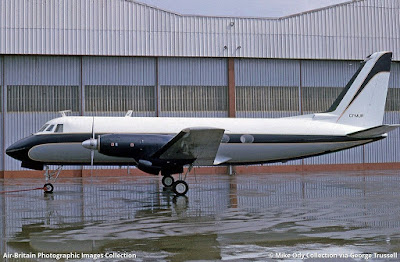As time passed, the type became more affordable in the secondary market and numerous corporations and commercial operators added G-159s to their fleets. Besides its initial role as an executive transport, the Gulfstream provided logistical support for natural resource development in remote regions of the nation, was used as a regional airliner with a 24-seat interior, acted as a platform for geophysical surveys, and performed nocturnal missions as freighters.
Between 1958 and 1969, 200 G-159s were built by Grumman at Bethpage, New York. Of those, 25 wore a Canadian registration. Today fewer than a dozen airframes remain airworthy around the world. The sole example on the CCAR is C-FAWE (188). Currently withdrawn from service at Rouyn-Noranda, Quebec, it would be wonderful to hear its R-R Darts spool up and to see it airborne once again.
 |
| CF-MUR (054) taken in 1964 at Toronto. With permission from George Trussell |
 |
| C-FCOL (064) and C-FAWG (106) courtesy of Caz Caswell |







No comments:
Post a Comment